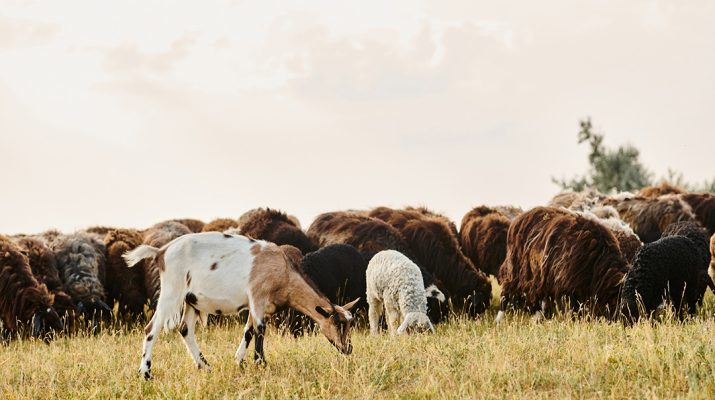AUSTRALIA’S red meat and livestock sector entered 2025 on a strong footing, achieving new milestones in growth, innovation and global competitiveness despite a rapidly changing operating environment, according to the State of the Industry Report released by Meat & Livestock Australia (MLA).
The State of the Industry Report highlights a year of transformation and achievement, with the industry setting new benchmarks across production, exports and market engagement.
Despite the challenging seasonal conditions that emerged from 2023 and continued into 2024 across large parts of southern Australia, the sector delivered record production volumes of beef, sheep meat and goat meat, while expanding its global market share and supporting hundreds of thousands of jobs across regional Australia.
The Minister for Agriculture, Fisheries and Forestry, Julie Collins, said that the industry’s performance underscores its role as a cornerstone of the national economy and a trusted supplier of high-quality protein to millions of consumers worldwide.
“Despite challenging seasonal conditions in some regions, it’s really pleasing to see that the red meat industry is on such a positive footing and that record production has been achieved by the sector as a whole,” Minister Collins said. “We’re focused on getting the policy settings right to ensure Australian red meat continues to succeed at home and abroad.”
The MLA’s managing director, Michael Crowley, said the report showcases the industry’s resilience amid highly variable seasonal conditions and growing global demand, despite cost-of-living pressures worldwide. “(The year) 2024 was a landmark year for Australia’s red meat and livestock sector,” Mr Crowley said. “We achieved record production across lamb and goatmeat, saw beef exports surge to new heights, and continued to expand our presence in global markets.
These results are a testament to the industry’s ability to meet and exceed customer and consumer expectations across markets worldwide. At the same time, we’re investing in understanding and responding to changing consumer preferences here at home.
“MLA is utilising insights that inform marketing programs to ensure red meat remains relevant across generations and cultural communities. Our work with butchers, restaurants and food influencers is helping us connect with new audiences, ensuring that Australian red meat continues to be a trusted and valued part of the Australian diet.”
Exports
AUSTRALIA’S red meat and livestock exports rose 3.2 per cent year-on-year in 2024, reaching $19.5 billion in value. Australia also retained its position as the world’s largest exporter of sheep meat and goat meat, and the second-largest beef exporter behind Brazil. Beef exports increased significantly to 1.34 million tonnes shipped weight (swt), marking a 24 per cent rise compared to the previous year.
Lamb exports reached 359,299 tonnes swt, the highest on record and 10 per cent above 2023 levels, while mutton exports totalled 255,090 tonnes swt, up 21.6 per cent year-on-year. Goat meat exports also surged, with 51,489 tonnes swt exported in 2024, an increase of 51.9 per cent on the previous year.
Live exports included 766,044 cattle, up 13 per cent from 2023, and 433,078 sheep, which was a 33 per cent decline compared to the previous year. Indonesia remained Australia’s largest market for live cattle exports, accounting for 70 per cent of total volume, followed by Vietnam at 16 per cent and China at 7 per cent.
For the first time, Jordan became Australia’s largest destination for live sheep exports, receiving 30 per cent of total shipments. This shift was largely due to a 58 per cent drop in exports to Kuwait, driven by vessel availability.
“Australia’s record red meat exports in 2024 are a reflection of our industry’s global customer focus to deliver high-quality, safe and nutritious red meat solutions to meet growing demand,” Mr Crowley said. “These results are built on the trust the industry has earned with international customers, the integrity of our supply chains, and the dedication of producers and processors across regional Australia.
“As global demand for premium protein continues to grow, Australia is well positioned to lead, innovate and deliver value for our customers and trading partners.”
Domestic consumption
AUSTRALIA remains one of the world’s highest per capita consumers of red meat, with beef consumption averaging 22.4kg and sheep meat at 7kg per person in 2024, well above the global averages of 6.0kg for beef and 1.4kg for sheep meat. “This enduring appetite for red meat, from backyard barbecues to family roasts, is supported by a strong tradition of quality and trust in locally produced food,” Mr Crowley said.
According to the latest MLA research, 92 per cent of Australian households bought beef and 72 per cent bought lamb, highlighting the central role red meat plays in Australian diets. This stability, combined with targeted industry engagement and innovation, positions Australian red meat for continued relevance and growth in a changing domestic market.
Industry turnover
IN 2023-24, the red meat and livestock industry generated $77.1 billion in turnover, representing 1.5 per cent of Australia’s total key industry turnover. While turnover eased 10.3 per cent year-on-year due to price contractions and elevated supply, the processing sector remained strong, increasing turnover by 5.4 per cent. Production (beef cattle, sheep and goat farming and feedlots) contributed 45.8 per cent of total turnover, followed by processing (35.4 per cent) and wholesale/retail (18.8 per cent).
In 2023-24, the Australian red meat and livestock industry employed about 462,272 people. Of these, 197,512 were directly employed in the industry. The sector was also responsible for employing an additional 264,760 people in businesses serving the red meat and livestock industry.


